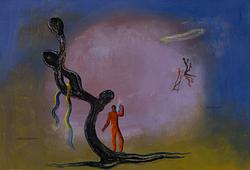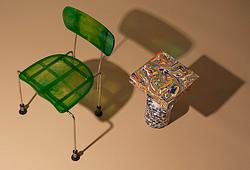Pieter van Overschie (van Overschee), attributed to
Still Life with Lobster, Nautilus Shell, Wanli dish, and Lemon
Reinforced panel 49 x 63 cm.
Alkuperä - Provenienssi
Maison Jansen, rue Royale, Paris.
Muut tiedot
Bukowskis are grateful to Fred G Meijer for confirming the attribution to Pieter van Overschie based on photographs.
Still life painting and the so-called "pronkstilleven" style of ornate still life painting, which was developed in the 1640s in Antwerp from where it spread quickly to the Dutch Republic. The style is characterised by extravagance and opulence. With brilliant precision, compositions of flowers in all forms and shapes, European and tropical fruits, lobsters and oysters, butterflies and moths, stone and metal, snails and seashells were depicted. In interpretations of 17th-century still lifes, oysters and fruits are seen as symbols of fertility, while ears of grain and butterflies represented eternal life and resurrection. Water droplets or insects gave an impression of immediacy. By incorporating symbols into the composition, a message and moral could be conveyed. A venomous snake under strands of grass poses a hidden threat, a skull reminds us of the transience of life, gold and silver goblets demonstrate the vanity of the upper class's earthly possessions, as do the precious porcelain dishes imported from China. Salvation is allegorically illustrated as a chalice among flowers and death as a crucifix in a wreath. The paintings with arranged settings of selected delicacies and rare objects served as religious reminders to avoid gluttony, but they also showcased the artist's exceptional skill in depicting these beautiful presentations.














































